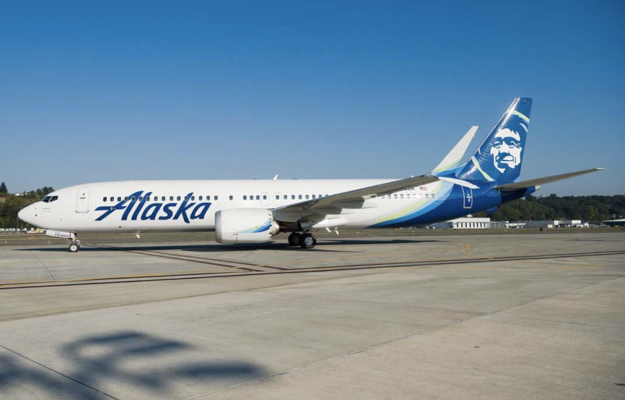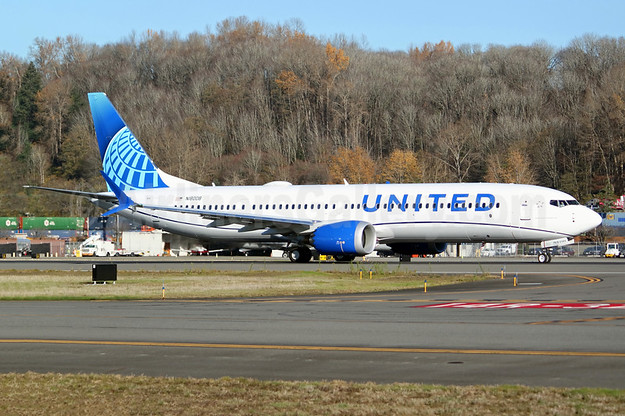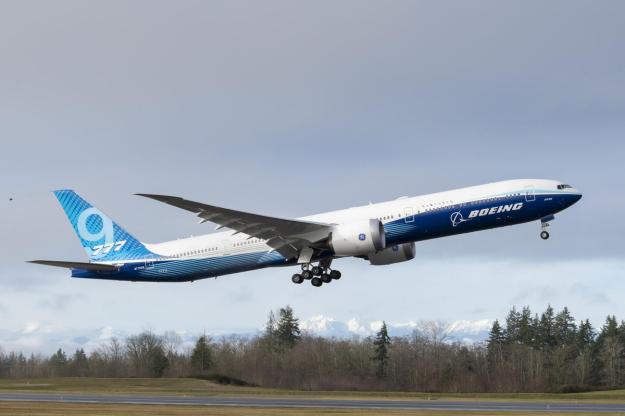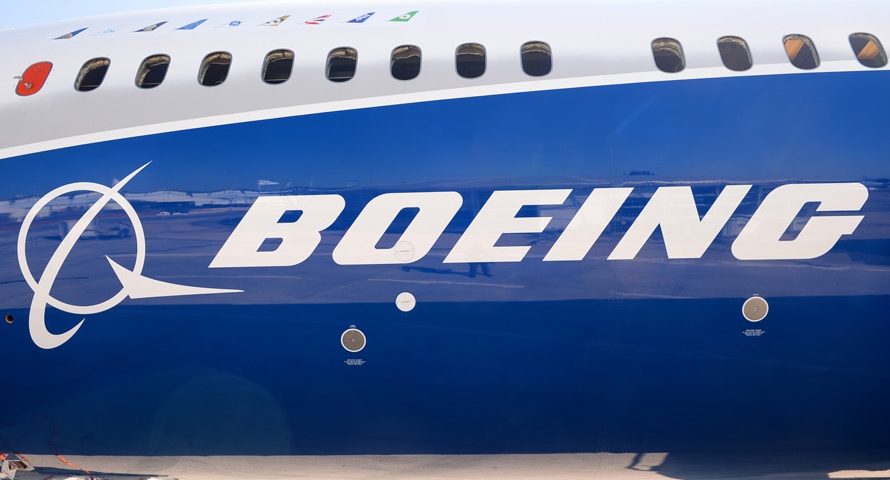
Alaska Air Group reports fourth quarter 2020 and full-year results
January 27, 2021
United makes Hawaii travel easier with expanded COVID testing and pre-clearance program
January 28, 2021Boeing issued this report:
Fourth Quarter 2020
- Financial results significantly impacted by COVID-19, 737 MAX grounding, and commercial wide body programs
- 777X program recorded $6.5 billion pre-tax charge; first delivery expected in late 2023
- 737 MAX began receiving regulatory approval to resume operations and restarted deliveries
- Revenue of $15.3 billion, GAAP loss per share of ($14.65) and core (non-GAAP)* loss per share of ($15.25)
Full-Year 2020
- Revenue of $58.2 billion, GAAP loss per share of ($20.88) and core (non-GAAP)* loss per share of ($23.25)
- Operating cash flow of ($18.4) billion; cash and marketable securities of $25.6 billion
- Total backlog of $363 billion, including more than 4,000 commercial airplanes
- Strengthening safety processes, improving performance, managing liquidity and transforming for the future
|
Table 1. Summary Financial Results |
Fourth Quarter |
Full Year |
|||||||||
|
(Dollars in Millions, except per share data) |
2020 |
2019 |
Change |
2020 |
2019 |
Change |
|||||
|
Revenues |
$15,304 |
$17,911 |
(15)% |
$58,158 |
$76,559 |
(24)% |
|||||
|
GAAP |
|||||||||||
|
Loss From Operations |
($8,049) |
($2,204) |
NM |
($12,767) |
($1,975) |
NM |
|||||
|
Operating Margin |
(52.6)% |
(12.3)% |
NM |
(22.0)% |
(2.6)% |
NM |
|||||
|
Net Loss |
($8,439) |
($1,010) |
NM |
($11,941) |
($636) |
NM |
|||||
|
Loss Per Share |
($14.65) |
($1.79) |
NM |
($20.88) |
($1.12) |
NM |
|||||
|
Operating Cash Flow |
($4,009) |
($2,220) |
NM |
($18,410) |
($2,446) |
NM |
|||||
|
Non-GAAP* |
|||||||||||
|
Core Operating Loss |
($8,377) |
($2,526) |
NM |
($14,150) |
($3,390) |
NM |
|||||
|
Core Operating Margin |
(54.7)% |
(14.1)% |
NM |
(24.3)% |
(4.4)% |
NM |
|||||
|
Core Loss Per Share |
($15.25) |
($2.33) |
NM |
($23.25) |
($3.47) |
NM |
|||||
|
*Non-GAAP measure; complete definitions of Boeing’s non-GAAP measures are on page 6, “Non-GAAP Measures Disclosures.” |
The Boeing Company today reported fourth-quarter revenue of $15.3 billion, reflecting lower commercial deliveries and services volume primarily due to COVID-19 as well as 787 production issues, partially offset by a lower 737 MAX customer considerations charge in the quarter compared to the same period last year (Table 1). GAAP loss per share of ($14.65) and core loss per share (non-GAAP)* of ($15.25) reflected a $6.5 billion pre-tax charge on the 777X program and a tax valuation allowance, partially offset by a lower 737 MAX customer considerations charge. Boeing recorded operating cash flow of ($4.0) billion.
“2020 was a year of profound societal and global disruption which significantly constrained our industry. The deep impact of the pandemic on commercial air travel, coupled with the 737 MAX grounding, challenged our results. I am proud of the resilience and dedication our global team demonstrated in this environment as we strengthened our safety processes, adapted to our market and supported our customers, suppliers, communities and each other,” said Boeing President and Chief Executive Officer Dave Calhoun. “Our balanced portfolio of diverse defense, space and services programs continues to provide important stability as we lay the foundation for our recovery. While the impact of COVID-19 presents continued challenges for commercial aerospace into 2021, we remain confident in our future, squarely-focused on safety, quality and transparency as we rebuild trust and transform our business.”
The return to service of the 737 MAX in the U.S. and several other markets was an important step, and Boeing continues to follow the lead of global regulators and support its customers. Since the FAA’s approval to return to operations, Boeing has delivered over 40 737 MAX aircraft and five airlines have safely returned their fleets to service as of January 25, 2021, safely flying more than 2,700 revenue flights and approximately 5,500 flight hours.

Boeing now anticipates that the first 777X delivery will occur in late 2023. This schedule, and the associated financial impact, reflect a number of factors, including an updated assessment of global certification requirements, the company’s latest assessment of COVID-19 impacts on market demand, and discussions with its customers with respect to aircraft delivery timing.
The company continues to progress through its business transformation effort across five key areas including its infrastructure footprint, overhead and organizational structure, portfolio and investment mix, supply chain health and operational excellence. Boeing will continue these actions in 2021 to preserve liquidity, adapt to the new market, improve performance, sustain key investments and transform its business to be more productive, resilient and competitive for the long term.
|
Table 2. Cash Flow |
Fourth Quarter |
Full Year |
|||||
|
(Millions) |
2020 |
2019 |
2020 |
2019 |
|||
|
Operating Cash Flow |
($4,009) |
($2,220) |
($18,410) |
($2,446) |
|||
|
Less Additions to Property, Plant & Equipment |
($265) |
($447) |
($1,303) |
($1,834) |
|||
|
Free Cash Flow* |
($4,274) |
($2,667) |
($19,713) |
($4,280) |
|||
|
*Non-GAAP measure; complete definitions of Boeing’s non-GAAP measures are on page 6, “Non-GAAP Measures Disclosures.” |
Operating cash flow was ($4.0) billion in the quarter, reflecting lower commercial deliveries and services volume, as well as timing of receipts and expenditures (Table 2).
|
Table 3. Cash, Marketable Securities and Debt Balances |
Quarter-End |
||
|
(Billions) |
Q4 20 |
Q3 20 |
|
|
Cash |
$7.8 |
$10.6 |
|
|
Marketable Securities1 |
$17.8 |
$16.5 |
|
|
Total |
$25.6 |
$27.1 |
|
|
Debt Balances: |
|||
|
The Boeing Company, net of inter company loans to BCC |
$62.0 |
$59.1 |
|
|
Boeing Capital, including inter company loans |
$1.6 |
$1.9 |
|
|
Total Consolidated Debt |
$63.6 |
$61.0 |
|
|
1 Marketable securities consists primarily of time deposits due within one year classified as “short-term investments.” |
Cash and investments in marketable securities decreased to $25.6 billion, compared to $27.1 billion at the beginning of the quarter, primarily driven by operating cash outflows partially offset by changes in the debt balance (Table 3).
Total company backlog at quarter-end was $363 billion.
Segment Results
Commercial Airplanes
|
Table 4. Commercial Airplanes |
Fourth Quarter |
Full Year |
|||||||||
|
(Dollars in Millions) |
2020 |
2019 |
Change |
2020 |
2019 |
Change |
|||||
|
Commercial Airplanes Deliveries |
59 |
79 |
(25)% |
157 |
380 |
(59)% |
|||||
|
Revenues |
$4,728 |
$7,462 |
(37)% |
$16,162 |
$32,255 |
(50)% |
|||||
|
Loss from Operations |
($7,648) |
($2,844) |
NM |
($13,847) |
($6,657) |
NM |
|||||
|
Operating Margin |
(161.8)% |
(38.1)% |
NM |
(85.7)% |
(20.6)% |
NM |
|||||
Commercial Airplanes fourth-quarter revenue decreased to $4.7 billion, driven by lower widebody delivery volume due to COVID-19 impacts as well as 787 production issues, partially offset by higher 737 deliveries and a lower 737 MAX customer consideration charge in the quarter compared to the same period last year (Table 4). Fourth-quarter operating margin decreased to (161.8) percent, primarily driven by a $6.5 billion pre-tax charge on the 777X program, lower delivery volume, and $468 million of abnormal production costs related to the 737 program, partially offset by a lower 737 MAX customer consideration charge.
Commercial Airplanes production rate assumptions reflect the continued impacts of COVID-19 on commercial demand, and the company will continue to assess them on an ongoing basis. The 737 program is currently producing at a low rate and expects to gradually increase production to 31 per month in early 2022 with further gradual increases to correspond with market demand. The 787 program plans to transition its production rate to 5 per month in March 2021, at which point 787 final assembly will be consolidated to Boeing South Carolina.
As discussed above, Commercial Airplanes now expects first delivery of the 777X to occur in late 2023 and has recorded a $6.5 billion reach-forward loss on the 777X program. Among the factors contributing to the revised first delivery schedule and reach-forward loss are an updated assessment of certification requirements based on ongoing communication with civil aviation authorities, an updated assessment of market demand based on continued dialogue with customers, resulting adjustments to production rates and the program accounting quantity, increased change incorporation costs, and associated customer and supply chain impacts. The production rate expectation for the combined 777/777X program remains at 2 per month in 2021.
Commercial Airplanes captured orders for 75 737 aircraft from Ryanair and eight 777 freighters from DHL, as well as a commitment for 23 737 aircraft from Alaska Airlines. Commercial Airplanes delivered 59 airplanes during the quarter, and backlog included over 4,000 airplanes valued at $282 billion.
Defense, Space & Security
|
Table 5. Defense, Space & Security |
Fourth Quarter |
Full Year |
|||||||||
|
(Dollars in Millions) |
2020 |
2019 |
Change |
2020 |
2019 |
Change |
|||||
|
Revenues |
$6,779 |
$5,927 |
14% |
$26,257 |
$26,095 |
1% |
|||||
|
Earnings from Operations |
$502 |
$34 |
1,376% |
$1,539 |
$2,615 |
(41)% |
|||||
|
Operating Margin |
7.4% |
0.6% |
6.8 Pts |
5.9% |
10.0% |
(4.1) Pts |
|||||
Defense, Space & Security fourth-quarter revenue increased to $6.8 billion, primarily driven by higher volume on fighter programs and the rest of the portfolio as well as a charge on the Commercial Crew program in the same period last year (Table 5). Fourth-quarter operating margin increased to 7.4 percent reflecting more favorable performance on multiple programs compared with the same period last year, partially offset by a $275 million pre-tax charge on the KC-46A Tanker program primarily due to production inefficiencies including impacts of COVID-19 disruption.
During the quarter, Defense, Space & Security was awarded contracts for two KC-46A aircraft for Japan and AEW&C upgrades for the Republic of Korea Air Force. Defense, Space & Security achieved first flight of the MQ-25 unmanned aircraft with an aerial refueling store and demonstrated ski-jump launch capability of the F/A-18 Super Hornet for the Indian Navy. Also in the quarter, Defense, Space & Security completed engineering design review for the Wideband Global SATCOM-11+ communications satellite and critical design review of the Space Launch System Exploration Upper Stage for NASA.
Backlog at Defense, Space & Security was $61 billion, of which 32 percent represents orders from customers outside the U.S.
Global Services
|
Table 6. Global Services |
Fourth Quarter |
Full Year |
|||||||||
|
(Dollars in Millions) |
2020 |
2019 |
Change |
2020 |
2019 |
Change |
|||||
|
Revenues |
$3,733 |
$4,648 |
(20)% |
$15,543 |
$18,468 |
(16)% |
|||||
|
Earnings from Operations |
$143 |
$684 |
(79)% |
$450 |
$2,697 |
(83)% |
|||||
|
Operating Margin |
3.8% |
14.7% |
(10.9) Pts |
2.9% |
14.6% |
(11.7) Pts |
|||||
Global Services fourth-quarter revenue decreased to $3.7 billion, driven by lower commercial services volume due to COVID-19 (Table 6). Fourth-quarter operating margin decreased to 3.8 percent primarily due to lower commercial services volume and $290 million of pre-tax charges related to asset impairments driven by COVID-19.
During the quarter, Global Services was awarded a Performance Based Logistics contract for the Republic of Singapore Air Force F-15SG fleet, secured a F-15 spares and logistics support contract with the Qatar Emiri Air Force, and was selected to provide P-8A training for the Royal New Zealand Air Force. Global Services also announced a 10-year digital services agreement with Frontier Airlines.
Additional Financial Information
|
Table 7. Additional Financial Information |
Fourth Quarter |
Full Year |
|||||
|
(Dollars in Millions) |
2020 |
2019 |
2020 |
2019 |
|||
|
Revenues |
|||||||
|
Boeing Capital |
$56 |
$37 |
$261 |
$244 |
|||
|
Unallocated items, eliminations and other |
$8 |
($163) |
($65) |
($503) |
|||
|
(Loss)/Earnings from Operations |
|||||||
|
Boeing Capital |
$16 |
($58) |
$63 |
$28 |
|||
|
FAS/CAS service cost adjustment |
$328 |
$322 |
$1,383 |
$1,415 |
|||
|
Other unallocated items and eliminations |
($1,390) |
($342) |
($2,355) |
($2,073) |
|||
|
Other income, net |
$122 |
$104 |
$447 |
$438 |
|||
|
Interest and debt expense |
($698) |
($242) |
($2,156) |
($722) |
|||
|
Effective tax rate |
2.2% |
56.9% |
17.5% |
71.8% |
|||
At quarter-end, Boeing Capital’s net portfolio balance was $2.0 billion. The change in revenue from other unallocated items and eliminations was primarily due to the timing of eliminations for inter company aircraft deliveries. Other unallocated items and eliminations included a $744 million charge related to the previously announced agreement between Boeing and the U.S. Department of Justice in January 2021. Interest and debt expense increased due to higher debt balances. The fourth quarter 2020 effective tax rate primarily reflects an additional valuation allowance on certain deferred income tax assets, partially offset by the benefit of the five year net operating loss carry back provision in the Coronavirus Aid, Relief, and Economic Security (CARES) Act.



